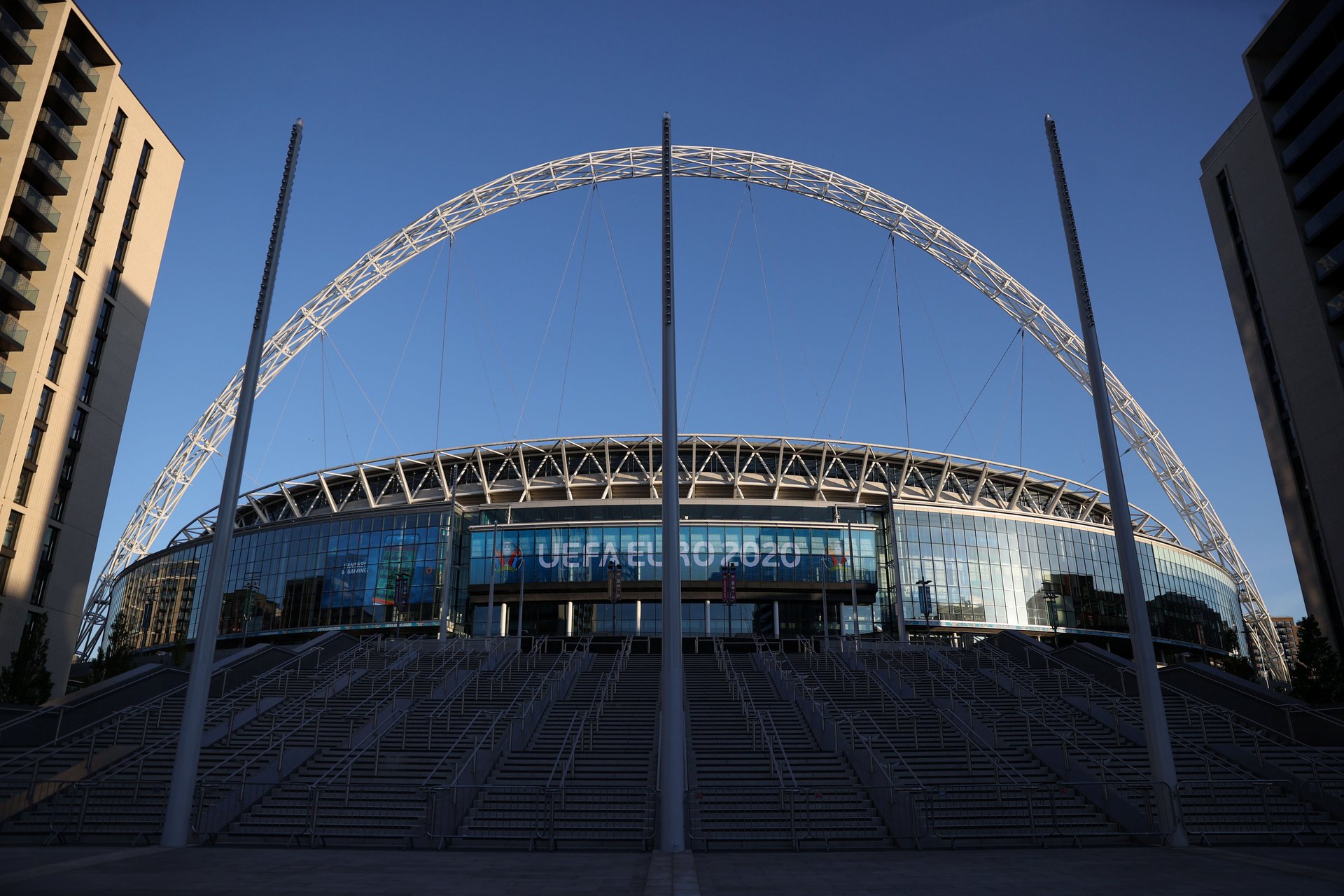60,000 spectators can now attend the Euro 2020 final in London
This piece has been updated.


This piece has been updated.
60,000 spectators will fill most of London’s Wembley Stadium for the semi-finals and final of the European soccer championships (Euro 2020) in early July, soccer’s European governing body announced on June 22, as the UK’s reopening gathers pace despite concerns over the Delta variant of coronavirus. As part of the deal, 2,500 “dignitaries” will reportedly enter the UK without having to quarantine.
Meanwhile, up to 10,000 spectators will be able to attend Olympic events in Tokyo, organizers announced this week (June 21). Only residents of Japan can secure tickets, and there will be mandatory masks, as well as a ban on cheering, talking loudly, and anything resembling normal sports crowd behavior. Tokyo lifted its Covid-19 state of emergency a day earlier (June 20), just 33 days before the opening ceremony.
Elite sports events are back in 2021, and the schedule over the next few months is especially packed. Alongside the Olympics and Euro 2020, there are the South American men’s soccer championships, NBA finals, tennis grand slams, golf majors, F1 grand prix, and an England vs India cricket test series. The common denominator? In most cases, and especially where vaccines have been rolled out effectively, large crowds are also back.
Olympic spectator rules and concerns
Last week, Japanese medical experts urged Olympics organizers to hold events without any spectators, describing it as the “least risky” option. The prime minister, Yoshihide Suga, even encouraged people to watch the Games on TV. Japan has a relatively low vaccination rate.
Seiko Hashimoto, president of the organizing committee, agreed then that this would restrict new Covid-19 infections, although she also wanted to explore the possibility of allowing spectators.
But she’s changed her mind somewhat. “There are so many cases, domestically and internationally [of] sports events with spectators,” she now says. “By exercising thorough measures and based on the government criteria, we believe we can hold the Games with spectators.”
Venues won’t be allowed to exceed 50% of their normal capacity, up to an absolute limit of 10,000 people. If there is evidence of a rise in infections, the rules will be reviewed and further restrictions could be imposed. For brands and companies who have spent millions on the Games, meanwhile, even a few spectators are much better than none at all.
European soccer holds key lessons
The European championship tournament also is under way a year late, across the entire continent as originally planned. From June 11-July 11, in 11 host cities from London to Baku, a few thousand fans are scattered around huge open stadia, creating a lower decibel, but still welcome wall of noise and atmosphere during games. There are fan parks in many cities, with big screens, beer, branding, and local junk food. Now, the tournament’s London climax will welcome huge crowds.
In the early games, Hungary was the anomaly. There, 61,000 unrestricted spectators attended games at the main stadium in Budapest, but the city itself is not completely open, and fans had to produce negative Covid-19 test results to gain entry. Hungary, Russia, and Azerbaijan are the only three countries to suspend quarantine requirements for overseas fans.
As far as we know, and with much of Europe fairly well vaccinated, there have been no Covid-19 spikes related to the tournament. We now know that outdoor spaces are generally safe, too. If the next few months of sporting events are successful in containing further outbreaks, it’s a huge step towards normality.